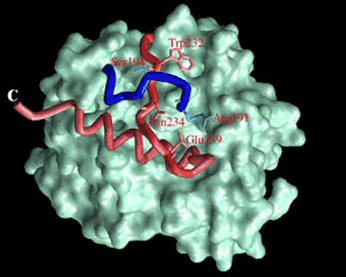The first knotted protein from the most ancient type of single-celled organism, an archaebacterium, has been discovered by researchers from Argonne National Laboratory and the University of Toronto using the Advanced Photon Source (APS) at Argonne. It is one of the few times that a knot has been seen in any protein structure. Protein folding theory previously held that forming a knot was beyond the ability of a protein.
The newly discovered knotted protein comes from a microorganism called Methanobacterium thermoautotrophicum. This organism is of interest to industry for its ability to break down waste products and produce methane gas. Scientists know which gene codes for the 268-amino acid protein, but they do not know the protein's function. They speculate that it binds to RNA, a chemical cousin of the genetic material DNA, and helps process this molecule.
The protein knot structure was solved at the Midwest Center for Structural Genomics (MCSG) , which is located at the APS. The MCSG is one of the Protein Structure Initiative (PSI) centers. The PSI, which is funded by the National Institute of General Medical Sciences, a component of the U.S. Department of Health and Human Services' National Institutes of Health, is a 10-year effort to determine 10,000 unique protein structures using fast, highly automated methods.
For more on this subject, see the ANL "What's New" article at https://www.anl.gov/OPA/whatsnew/knottyprotein.htm.
For the full text of the published article, see: T. I. Zarembinski et al., "Deep Trefoil Knot Implicated in RNA Binding Found in an Archaebacterial Protein," PROTEINS: Structure, Function, and Genetics 50:177 to 183 (2003).

